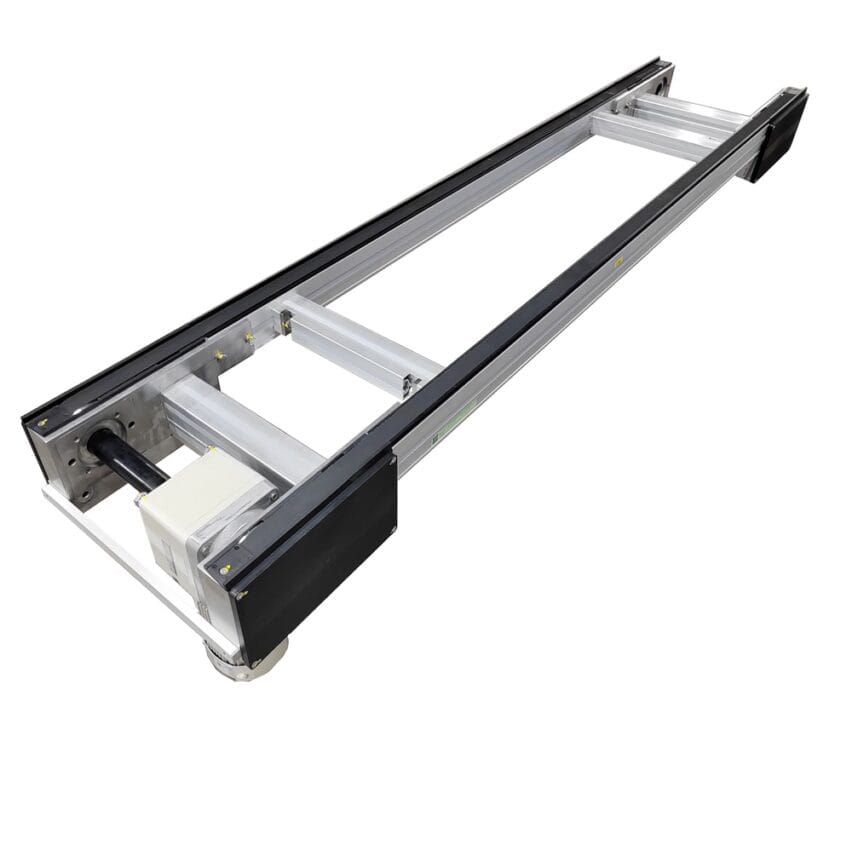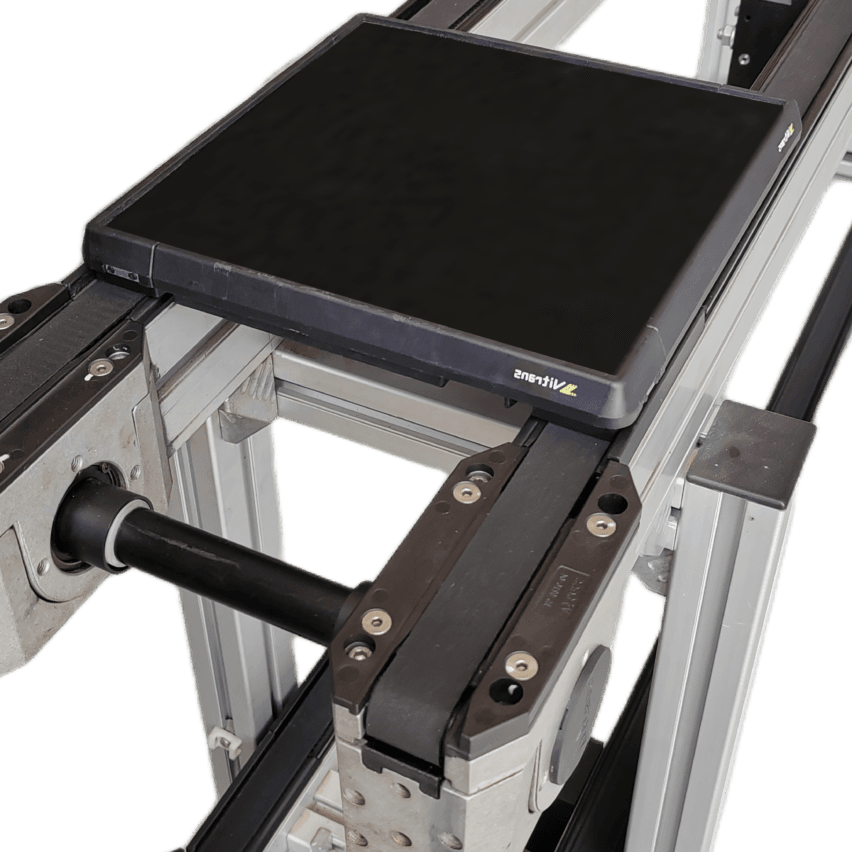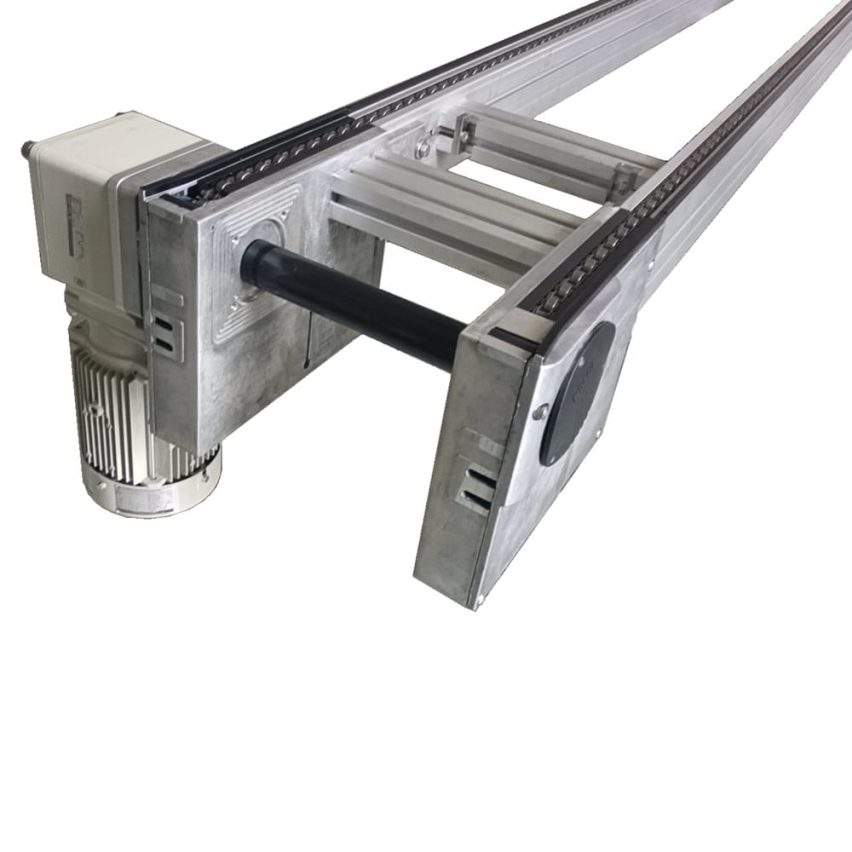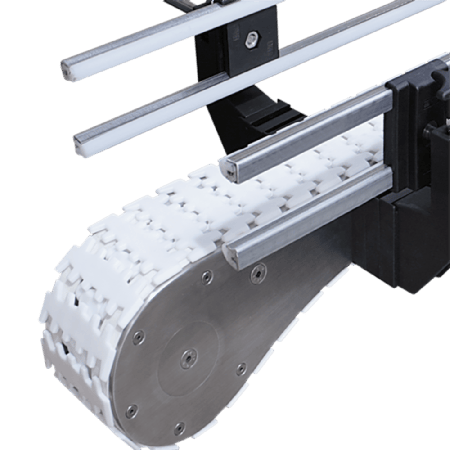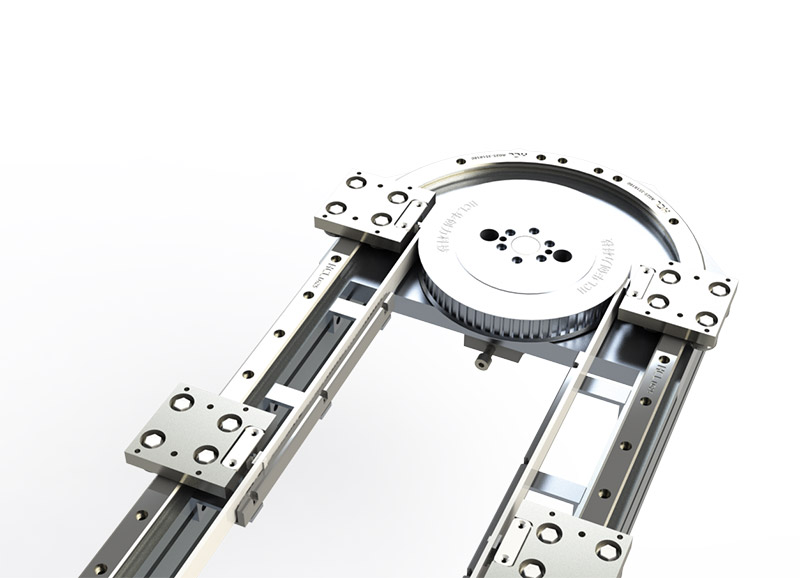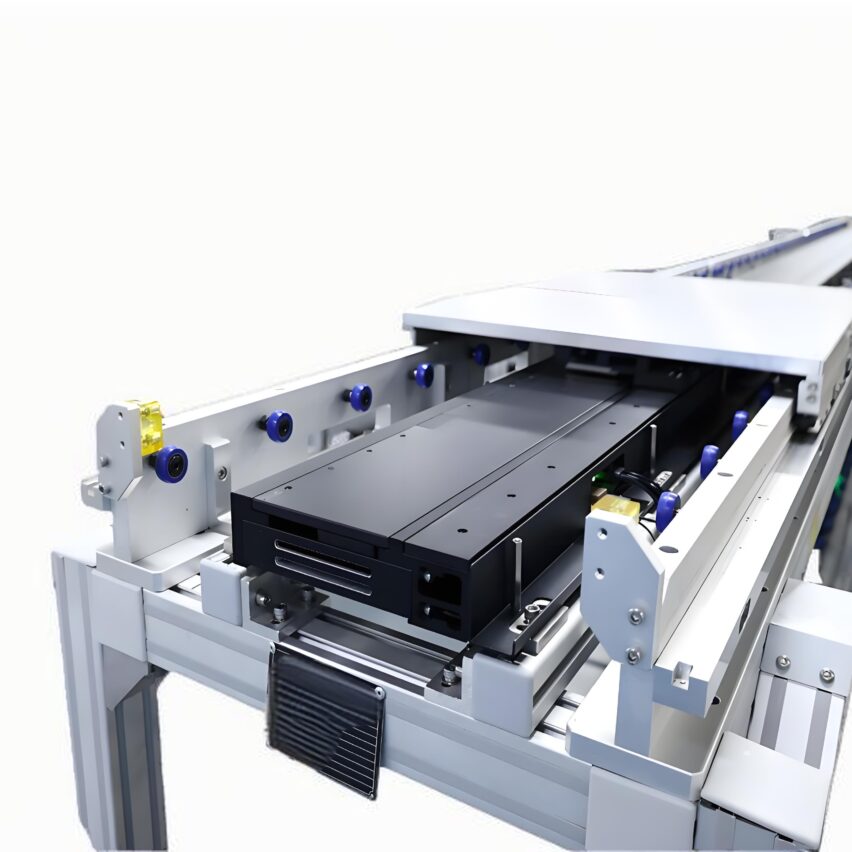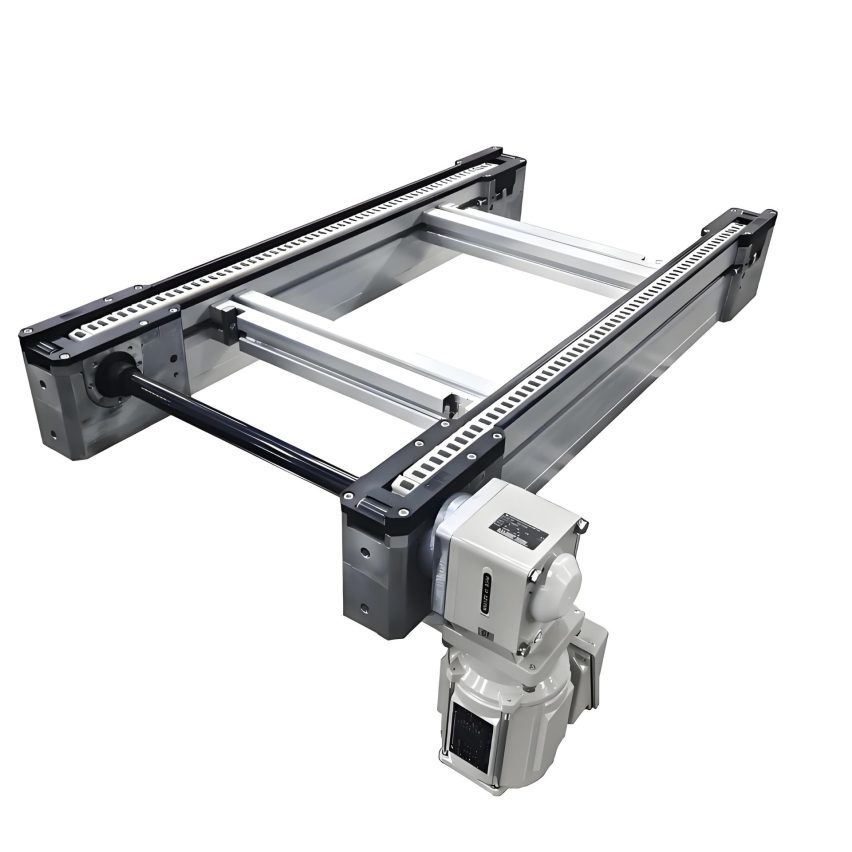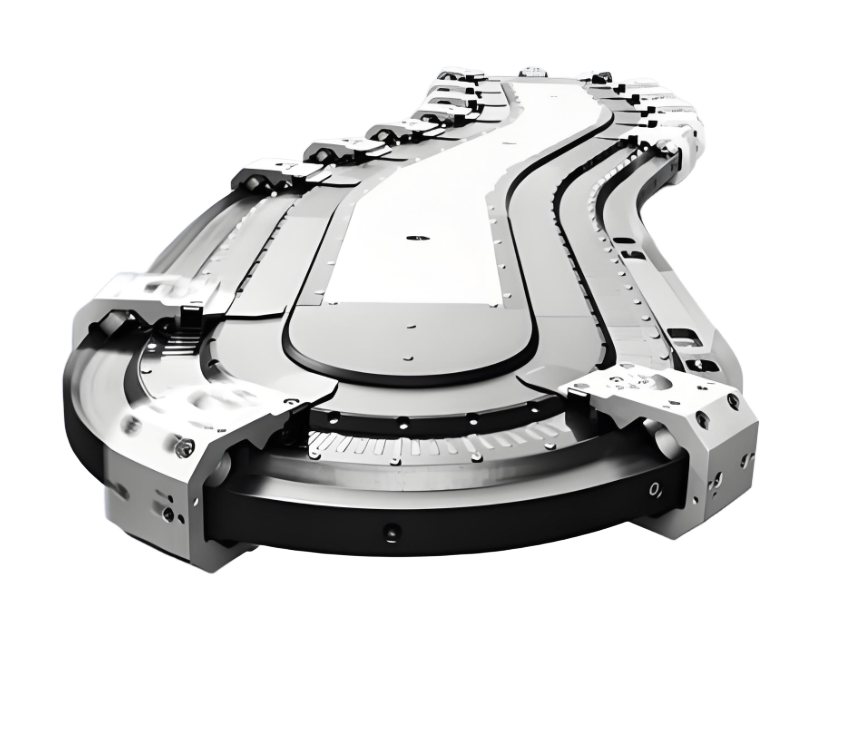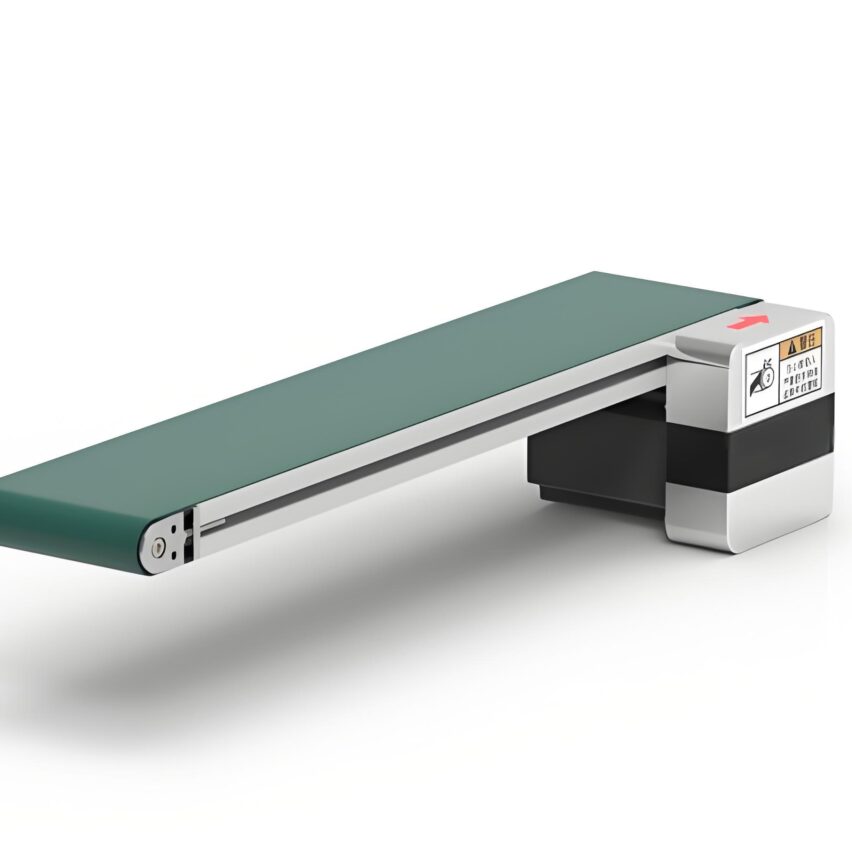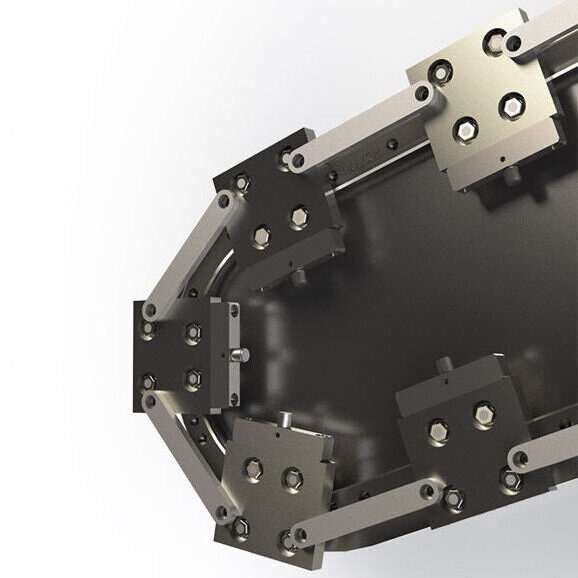One.Core Breakthrough: The Physical Intelligence of Differential Transmissions
The essence of the single layer chain is the "slow chain, fast board" differential speed design.. When the chain is running at a base speed of 2-20 m/min, the work plate can actually move up to 2.5-3 times faster than the chain due to the differential friction between the rollers and the guideway. This mechanism is realised through the synergy of three precision structures:
- Composite Roller ChainThe engineering plastic roller diameter is larger than the chain pitch, forming a lever-type incremental pivot point, giving the workpiece high kinetic energy;
- Friction Slip Control: Controllable sliding difference is retained between the work plate and the rollers, with the stopper to achieve ±0.5mm accurate stopping, leaving an operating window for the assembly process;
- Dynamic vibration damping guides: Aluminium alloy profile guideway with built-in honeycomb cavity suppresses running amplitude within ±0.1mm to avoid micro-displacement of precision parts.
personal viewpoint: This design is in factThe art of temporal displacement of mechanical energy--Low-speed chain for high-speed work plate, not only to reduce transmission loss, but also through the ring cycle to solve the space limitations, can be called "structure for efficiency" of the industrial classics.
Two.Structural design: the dance of modularity and reliability
1. Engineering philosophy of minimalist architecture
- circular one-piece layout: Closed loop at the head and tail of the single-layer structure, eliminating the need for a double-layer board return system and reducing the number of failure points by 301 TP3T;
- Flexible Adaptation of Accumulation Functions: Blocker for workpiece staging and support for asynchronous operations (e.g. manual inspection, precision assembly);
- Lightweight load designNylon/Carbon Fibre rollers with a load capacity of up to 80kg/m² meet the needs of 90% light industry.
2. The balancing act of durability and silence
- Low noise operation (≤70 dB): Engineering plastic roller with aluminium alloy guide rail, friction coefficient is controlled within 0.08;
- Anti-Aging StrategiesNickel-plated chain plates enhance corrosion resistance and have a lifespan of over 50,000 hours in a dust-free environment.
typical case: After adopting a single-layer chain in an electronic factory in Shenzhen, the maintenance manpower was reduced by 50%, and the failure rate dropped by 60%.
Three.Performance Advantage: Data Defines Competitiveness
- Spatial adaptability
Height adjustable range of 500-1000mm, suitable for small and medium-sized plant floor height limitations, compared with the double-deck system to save 40% vertical space. - Economic breakthrough
- Installation costs drop 40%: Modular components support 3-day rapid deployment;
- Energy savings of 15-20%: Low resistance to single-layer drives and lower motor power requirements.
- Smart Upgrade Potential
RFID chip integration enables traceability of workpiece boards, and MES system linkage optimises scheduling beats.
Industry Insight: When the daily output is <1000 pieces, the marginal benefit of a single-layer chain is significantly higher than that of a complex system -Avoiding paying for redundant features is the essence of lean manufacturing.
Four.Application Scenario: Gold Partner for Light Industry
1. Electrical and electronic assembly
- The workpiece is transported at a high speed of 15m/min to match the high-precision processes such as circuit board soldering;
- Anti-static design safeguards sensitive components, positioning accuracy ±0.5mm.
2. Food packaging and medical manufacturing
- The stainless steel material is GMP certified and resistant to alcohol wiping and high temperature steam sterilisation;
- Clean environment suitability far exceeds that of belt lines, with debris rates reduced to less than 0.3%.
Data corroboration: East China enterprise research shows that the daily output of 83% <800 pieces of factories using a single-layer chain, ROI of 200% or more.
Five.Technological evolution: the twin revolutions of intelligence and materials
1. Intelligent Enabling Pathways
- The tension sensor monitors overload in real time and links the PLC to automatically stop the machine;
- Predictive maintenance systems warn of link fatigue 14 days in advance.
2. Material science breakthroughs
Carbon fibre rollers carry up to 120kg/m² in tests, a weight reduction of 30% compared to conventional engineering plastics.
Exclusive Predictions: Single-layer chain penetration in flexible microfactories will exceed 601 TP3T in 2028, with modular design enabling module recycling rates of 901 TP3T and carbon footprint reductions of 351 TP3T.
Self-questioning on core issues
Q1: Which companies should most choose single-layer multiplier chains?
"Lightweights" for small- and medium-scale production::
- 3C electronic assembly plants with daily output of ≤1000 pieces (e.g. headphones, charger production lines);
- Customised workshops for small batch production of multiple batches (e.g. industrial design proofing centres).
Core logic: avoid paying a premium for equipment that does not meet capacity thresholds.
Q2: How to solve the shortcoming of single-layer chain carrying capacity?
three-stage enhancement strategy::
- Structural optimisation: Double-row chain layout upgraded to 160kg/m²;
- Material upgrade: Replacement of steel rollers for heavy-duty scenarios (limit 300kg);
- Intelligent Early Warning: Overload automatic shutdown to prevent structural damage.
Q3: Why is a single-layer chain a "safe springboard" for technology iteration?
Gradual escalation with manageable risk::
- Initial cost savings are used for technical team training;
- Standardised interfaces support subsequent access to AGVs and robotic arms.
Essence: Transform "hard inputs" into "soft power" reserves to match the pace of enterprise growth.

